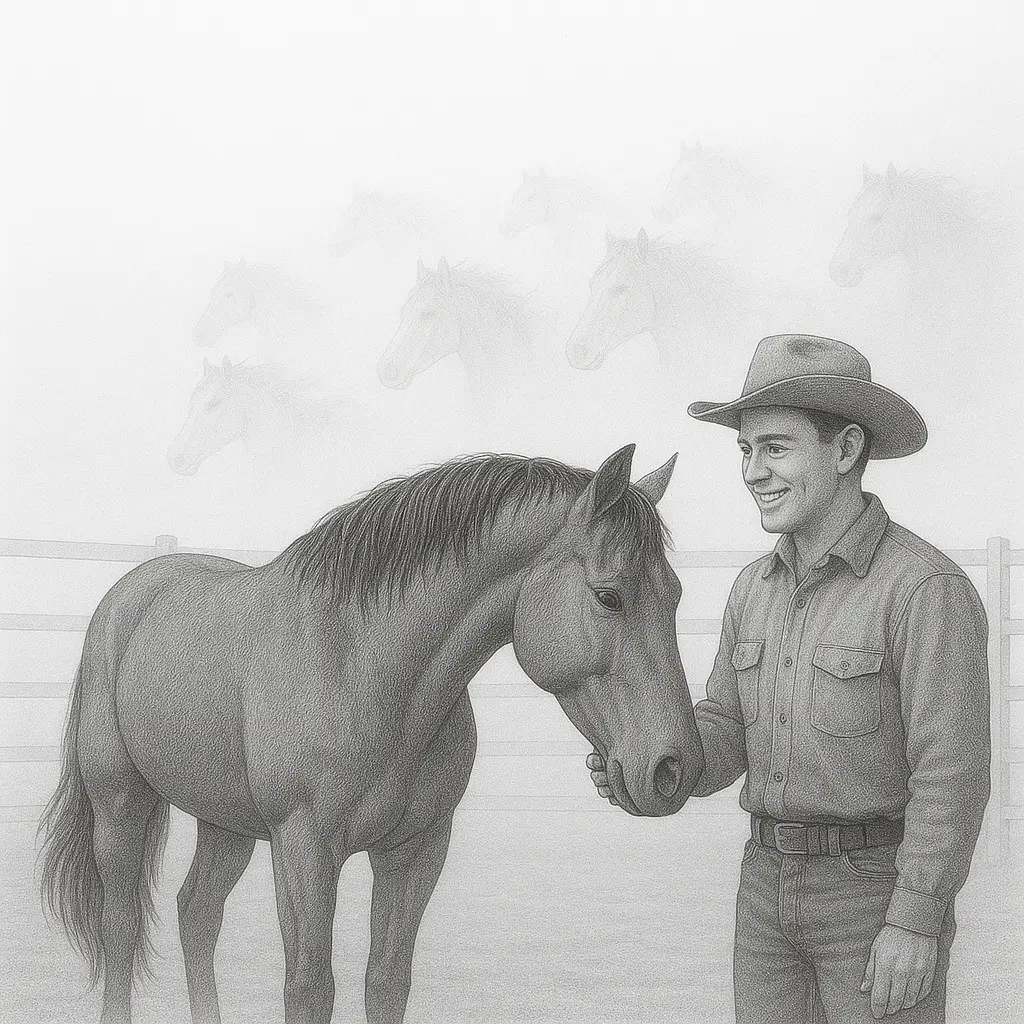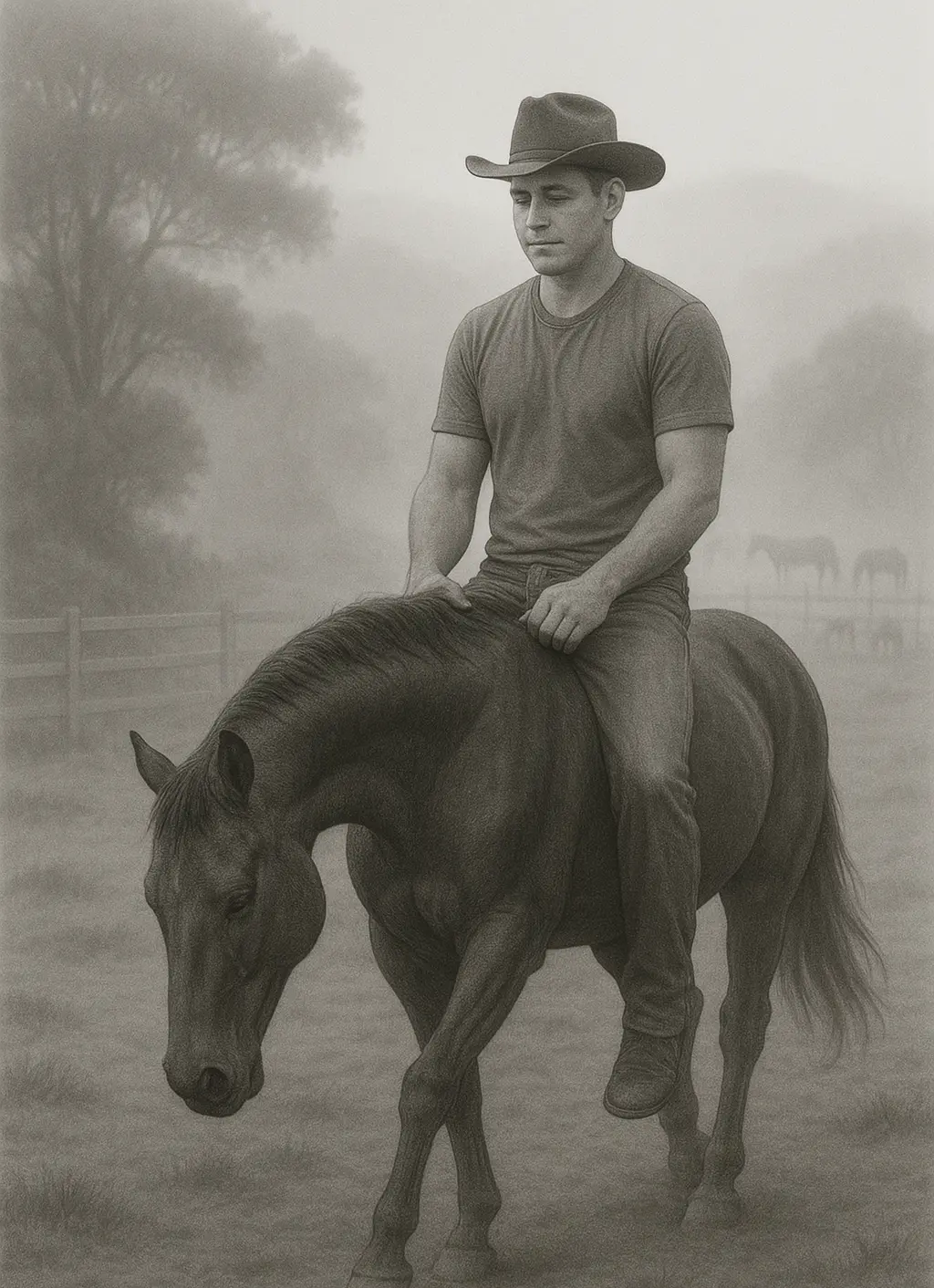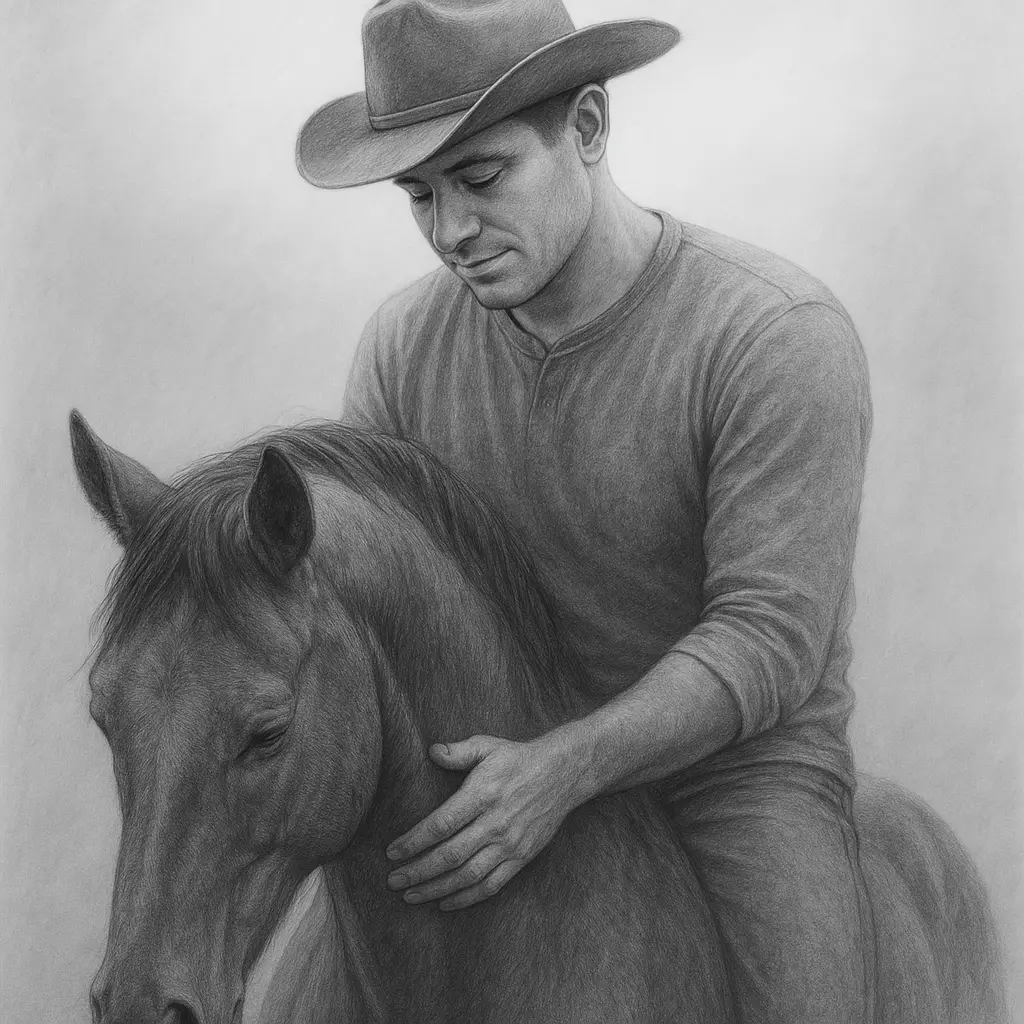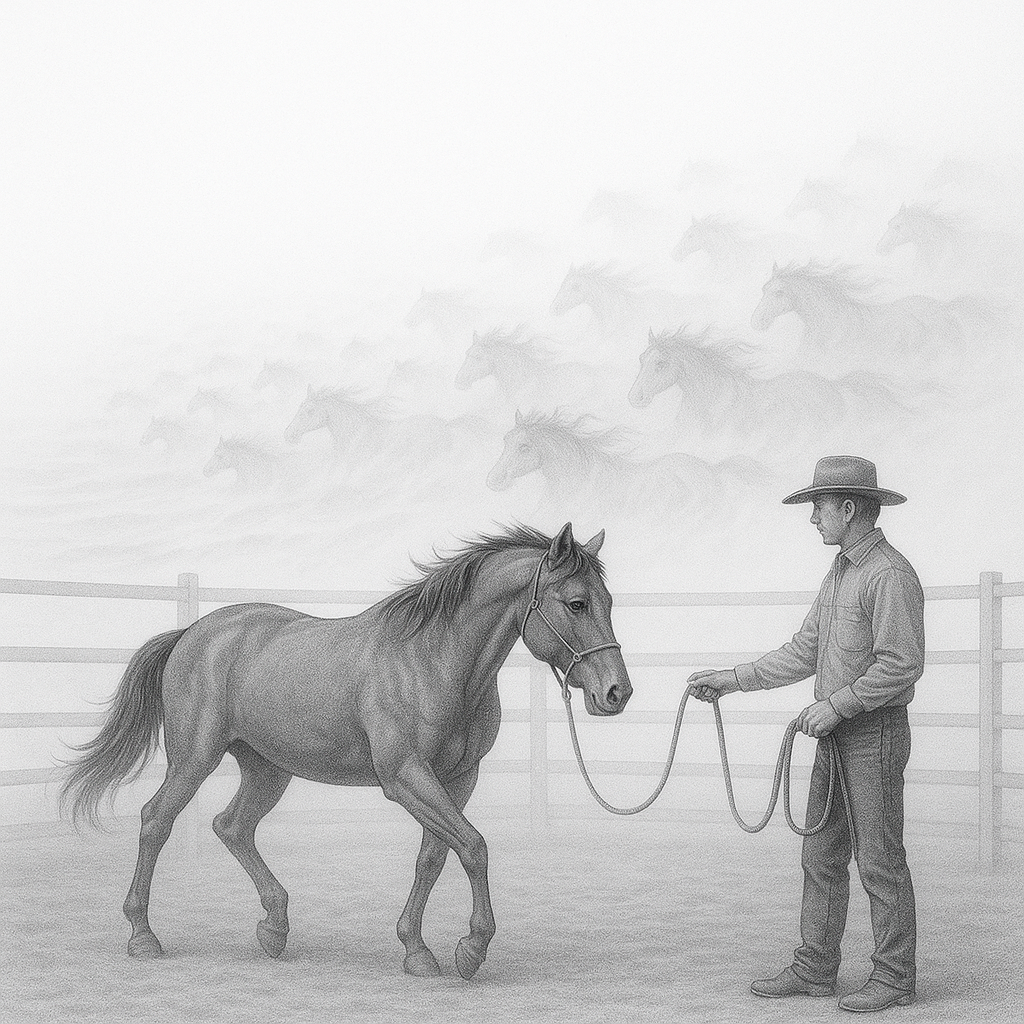Ever wondered why gentle training methods like pressure and release work so effectively with horses? Understanding the simple science behind natural horse training helps create willing, confident horses. This article breaks down how you can use clear signals, instant feedback, and trust-based techniques to achieve remarkable results.
What is Pressure and Release in Horse Training?
Pressure and release form the foundation of modern natural horsemanship. Simply put, you apply gentle pressure to request a behavior and immediately release that pressure when the horse responds correctly.
Why it’s effective:
- Horses naturally seek relief from pressure.
- Immediate release clearly signals to the horse that it performed correctly.
The Psychology Behind Why It Works
Horses learn primarily through negative reinforcement—not punishment, but rather relief from mild pressure. Understanding this helps you communicate clearly and kindly.
Negative Reinforcement Explained Clearly
Negative reinforcement simply means removing something (pressure) the moment the horse gives the correct response. This teaches horses that compliance equals comfort.
"Make the right thing easy and the wrong thing difficult." — Ray Hunt
How Pressure and Release Builds Trust
Clear, predictable use of pressure and immediate release builds trust by teaching your horse that you are fair and consistent.
Benefits of pressure-release training:
- Reduces anxiety and confusion
- Develops a trusting relationship
- Creates calm, responsive horses

Practical Steps: Applying Pressure and Release Effectively
Here’s how you can incorporate pressure-release techniques effectively into your daily training:

Step-by-Step Guide to Pressure-Release Training
- Clearly signal your request (use gentle, consistent pressure).
- Look for even the slightest effort (ear movement, slight shift, initial try).
- Immediately release pressure the instant the horse responds correctly.
- Pause and allow your horse to think (let the lesson sink in).
Common Exercises Using Pressure-Release
- Halter training and groundwork exercises
- Yielding hindquarters and forequarters
- Backing up
- Softening and flexing exercises
Mistakes to Avoid with Pressure and Release
While pressure and release is straightforward in theory, many horse trainers—even experienced ones—frequently make small yet impactful errors. Understanding and avoiding these mistakes can drastically improve your training results, accelerate your horse’s learning, and deepen mutual trust.

1. Delayed Release: Missing the Moment
What it means:
Delayed release occurs when the trainer does not instantly remove the pressure when the horse makes an effort or provides the correct response.
Why it matters:
Horses learn primarily through the timing of your release. Even a one- or two-second delay can confuse the horse about what exactly you wanted. If this happens consistently, your horse may become anxious, frustrated, or even resistant, making training sessions less effective.
Common scenarios causing delayed release:
- Trainer distracted or inattentive, missing the horse’s subtle attempt to comply.
- Trainer unsure if the response is correct, hesitating rather than rewarding effort immediately.
- Trainer focusing on perfect responses rather than rewarding incremental progress.
How to fix it:
- Practice recognizing small tries (like shifting weight, slight movements, changes in posture).
- Train yourself to give immediate feedback: even a partial correct response deserves an instant release.
- Be fully present in training sessions, avoiding distractions (e.g., phones, chatting).
2. Excessive Pressure: Overwhelming Your Horse
What it means:
Using more pressure than necessary to prompt a response. This can range from overly firm pulls on the rope, harsh leg or rein aids, or unnecessary escalation of aids too quickly.
Why it matters:
Excessive pressure creates stress, anxiety, and fear—none of which help learning or foster trust. Horses subjected to too much pressure may shut down emotionally, become aggressive or fearful, and ultimately resist or avoid future training interactions.
Signs you're using excessive pressure:
- Your horse tries to escape or pulls back frequently.
- Tension in your horse’s body (raised head, tight jaw, rapid breathing, wide eyes).
- Consistently escalating your aids without giving the horse adequate time to respond to lighter signals.
How to fix it:
- Always start with the lightest possible cue. Escalate gradually and gently, giving your horse the chance to respond.
- Regularly remind yourself: "Can I do less?" Try to achieve responses with increasingly subtle signals.
- Pay attention to your horse’s body language, adjusting immediately if signs of stress emerge.
3. Inconsistent Signals: Confusing Communication
What it means:
When cues or signals used by the trainer are not uniform or predictable. For instance, one day you apply gentle pressure for a certain response, but the next day you use stronger pressure for the same request, or change how you ask altogether.
Horses crave predictability and clarity. Inconsistent cues confuse your horse and create uncertainty about what’s expected. Over time, this inconsistency erodes trust, making your horse hesitant, resistant, or anxious during training.
Examples of inconsistent signaling:
- Changing how much pressure you use for the same cue.
- Asking for the same behavior differently each day (different body language, cues, or aids).
- Inconsistently rewarding attempts, confusing your horse about what behaviors are desirable.
How to fix it:
- Clearly define your cues for each behavior (write them down if necessary).
- Be conscious of your own consistency: same cues, same pressure, same timing every session.
- If changing cues, introduce the new cue gradually and consistently, clearly rewarding the correct response immediately.

4. Not Rewarding Incremental Progress: Expecting Too Much Too Soon
What it means:
Only releasing pressure or rewarding when your horse fully completes a task perfectly, ignoring partial correct responses.
Why it matters:
Learning in horses (and humans) happens incrementally. Ignoring small successes makes your horse feel unsuccessful or uncertain, hindering learning and diminishing motivation to cooperate.
Signs you're expecting too much:
- Your horse shows signs of frustration or anxiety (tail-swishing, ear-pinning, reluctance).
- Progress stalls or reverses because your horse isn't encouraged along the way.
How to fix it:
- Reward small improvements or “tries” immediately.
- Gradually increase your criteria as your horse gains confidence and skill.
- Celebrate incremental progress to build confidence, motivation, and trust.
5. Poor Timing: Missing the “Teaching Moment”
What it means:
Not only releasing late but also applying pressure at inappropriate or confusing times. For example, applying pressure when your horse cannot physically or mentally comply (such as during distraction, discomfort, or fear).
Why it matters:
Poor timing causes confusion and makes learning unnecessarily difficult. Horses quickly associate pressure with what immediately preceded or followed, so poor timing can accidentally reinforce unwanted behaviors.
Examples of poor timing:
- Increasing pressure when the horse is visibly confused or scared.
- Releasing pressure at the wrong moment, inadvertently rewarding resistance or undesired behavior.
How to fix it:
- Observe your horse carefully: apply pressure only when your horse is calm and attentive.
- If your horse is distracted or frightened, first re-establish calm before reintroducing pressure.
- Practice exercises specifically designed to improve your timing, such as groundwork drills with immediate, clear feedback.
Advanced Tips: Mastering Your Timing and Feel
Natural horsemanship legends like Buck Brannaman and Tom Dorrance emphasize two crucial skills: timing and feel. Mastering these subtleties separates good horse trainers from truly exceptional horsemen. Here’s how you can develop these advanced skills effectively:
- Practicing recognizing subtle "tries" from your horse.
- Developing soft, patient hands.
- Staying calm and consistent, even during challenges.
The Science of Trust: Why Horses Respond So Well
Horses communicate through subtle body language, movements, and expressions. Often, the earliest attempts a horse makes to respond—called “tries”—are small and easily missed by trainers not attuned to them.
What a subtle "try" might look like:
- Slight shift of weight or subtle lean in the requested direction
- A softening of facial muscles (relaxed jaw, blinking eyes, ear flick)
- A small movement of one hoof indicating readiness or willingness
Why recognizing tries matters:
Acknowledging and rewarding these subtle efforts encourages your horse to remain engaged and willing. Horses become more confident, motivated learners when their initial attempts are consistently noticed and rewarded.
How to improve recognition of tries:
- Practice carefully observing your horse in low-pressure situations.
- Slow down your training sessions—pausing frequently to observe your horse’s responses.
- Train yourself to notice subtle cues like breathing changes, eye softness, or shifts in posture.
- Consciously praise or release the instant you detect even the smallest effort from your horse.
Developing Soft, Patient Hands
"Feel" in horsemanship refers primarily to physical sensitivity—how lightly and precisely you communicate your requests to the horse through rein or rope pressure.
Characteristics of soft hands:
- Consistently gentle, steady, and reassuring
- Quick to reward with instant releases of pressure
- Responsive rather than reactive, maintaining consistent softness even under tension
Why soft hands matter:
Horses are highly sensitive animals. Rough, inconsistent hands create anxiety and resistance, whereas soft hands build confidence, relaxation, and cooperation. Over time, horses become lighter and more responsive, willingly following subtle cues.
Exercises for improving feel:
- Practice groundwork with a rope halter, focusing on using minimal finger pressure.
- Regularly ride with a loose rein or in a rope halter to develop sensitivity to subtle cues.
- Visualize "holding a baby bird" or "touching silk," reminding yourself to apply only the lightest pressure necessary.
- Frequently check your hands and arms for tension—softness starts in your shoulders and elbows.
Staying Calm and Consistent Under Pressure
Timing and feel are closely connected to your emotional state. Calmness and consistency provide a foundation for clear, effective communication, even when things get challenging.
Why emotional control matters:
Your horse mirrors your emotional state. Remaining calm and confident under pressure helps your horse stay composed, focused, and responsive, enhancing training effectiveness and trust.
How to improve calmness and consistency:
- Before training, practice simple breathing exercises to maintain relaxation.
- Create predictable routines—horses feel secure knowing what to expect each session.
- Reframe difficulties as learning opportunities, maintaining patience rather than becoming frustrated.
-
Regularly remind yourself of Tom Dorrance’s wisdom:
“Observe, remember, and compare—stay calm and never rush.”
- Faster cognitive response due to clear signaling
Key Takeaways: The Simplicity of Pressure, Release, and Trust
Natural horsemanship revolves around three beautifully simple yet profoundly effective principles: Pressure, Release, and Trust. Understanding and applying these concepts consistently is essential for developing a rewarding and productive relationship with your horse.
Pressure and Release: Clear and Fair Communication
The heart of natural horsemanship lies in the pressure and release method. Despite its simplicity, many trainers misunderstand or misuse this technique, undermining training effectiveness.
Why Pressure and Release Works:
- Clear signals: Horses naturally seek relief from pressure, making the method intuitive and easy for them to grasp. When pressure is released immediately upon the correct response, the horse understands precisely what is desired.
- Fairness: Pressure and release techniques prioritize gentle, incremental requests rather than forceful commands. This fairness fosters respect rather than fear.
How to Keep Pressure-Release Simple and Effective:
- Always start softly: Begin with the slightest cue, escalating pressure gradually only if needed.
- Instant feedback: Release the pressure the very moment your horse attempts the correct response—even if it's not perfect yet.
- Maintain clarity: Keep your signals consistent and straightforward so your horse can predict and rely on your cues.
Trust: The Scientifically Proven Foundation
Trust is more than an emotional connection—it’s a scientifically validated cornerstone of effective learning in horses. Trust transforms how your horse perceives and interacts with you, significantly enhancing learning and cooperation.
The Science Behind Trust in Horse Training:
- Reduced stress (cortisol levels): Research consistently demonstrates that trust-based training reduces stress hormones like cortisol, allowing your horse to stay calm, focused, and responsive.
- Improved learning and memory retention: Horses trained gently retain information better because stress impedes memory formation. When your horse trusts you, it learns faster, remembers lessons longer, and progresses more efficiently.
- Enhanced cognitive responses: Clear communication and trust-based interactions improve cognitive clarity, enabling horses to respond quickly, confidently, and correctly.
How to Build Genuine Trust with Your Horse:
- Be predictable: Horses thrive on consistency. Predictable routines and consistent cues build trust rapidly.
- Practice patience: Always remain patient and calm, even if training sessions become challenging.
- Create positive experiences: Regularly spend undemanding time with your horse, grooming, walking, or simply being present without expectations to deepen your bond.
Consistency and Timing: Turning Good Training into Great Partnerships
Even if your methods are gentle and fair, they won't reach their full potential without impeccable consistency and timing. These elements transform the simple mechanics of training into a harmonious partnership.
Consistency: The Power of Predictability
Consistency in your cues, expectations, and rewards lets your horse know precisely what is expected. This creates a stable, reassuring environment in which your horse feels secure, enabling faster learning and smoother training sessions.
How to Improve Consistency:
- Clearly define your cues and responses (write them down if necessary).
- Maintain the same expectations every session—avoid changing your criteria without clearly communicating this to your horse.
- Establish predictable training routines and rituals (e.g., always ending sessions on a positive note).
Frequently Asked Questions (FAQs)
What exactly is pressure-release in horse training?
Applying gentle pressure to prompt a response, and instantly releasing when the horse responds correctly.
Why do horses respond better to gentle methods like pressure-release?
Horses naturally seek comfort, and gentle methods clearly communicate what behavior provides relief.
Is pressure-release training effective for difficult or fearful horses?
Yes, gentle pressure-release methods are especially effective because they build confidence and reduce stress.
Recommended Resources for Further Learning
-
Books:
- Think Harmony with Horses by Ray Hunt
- True Horsemanship Through Feel by Bill Dorrance
- Believe: A Horseman’s Journey by Buck Brannaman
-
Clinics and Videos:
- Buck Brannaman’s Horsemanship Clinics
- Leyden Horsemanship Elearning Courses or Horsemanship Academy

Engage Further: Join Our Horsemanship Community
Ready to put these principles into practice?
Join our Natural Horsemanship Community. Share experiences, ask questions, and connect with trainers who use pressure-release techniques effectively.